Dogs and cats are cute, easy to take care of and act as amazing pets yet they are not the limit. Here are some animals which do not get as much attention as they need from us as the canines and felines. But when domesticated, they can just as well be a member of your family.
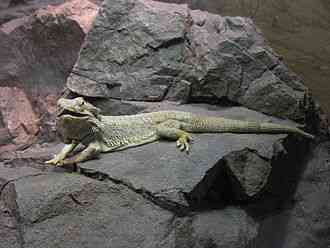
1. Bearded Dragons or Pogona vitticeps
The name ‘Bearded Dragon’ refers to the underside of the throat which has a tendency to turn black when stressed or at the sight of a potential rival or predator. Adept climbers, these reptiles spend a lot of their time on trees and bushes or near human habitations. Due to their hardy and easy to care nature, these animals are often kept as pets in houses or exhibited in zoos. The downside of having Bearded Dragon as pet is that they are not really the cuddliest of the bunch. Upon being startled or handled roughly, these have a tendency to protect themselves by biting and cause painful injury. Despite which, the venom in non-toxic. By washing the wound, any sort of infection can be prevented. You have to feed them live food like crickets or worms and fresh vegetables. Remember: fresh and live is the key.

2. Guinea Pig or Cavia porcellus or Cavy or Domestic Cavy
They are domestic relatives of Cavia tschudii. Guinea pig play a vital role in folk culture of indigenous Andaen group. Mainly as food source or medicine and religious practices. They are a culinary stale in Andes mountain where they are known as Cuy. But we are not here to talk about how these cutie pooties are served as delicacy. Domestic Cavy have enjoyed widespread popularity in West, both as a household pet or as a pocket pet. A pocket pet usually refers to small mammals commonly kept as household pets. Other examples include hamsters, gerbils, sugar gliders, fancy mice, fancy rats and chinchillas. Anyway, they are known for their docile and friendly nature. Guinea pigs are known for their affectionate responses to handling and feeding. The ease with which someone could deal with them have made them popular among humans. These animals are often used as test subject in various experiments, giving rise to the epithet Guinea pig’. Although now they have been replaced by mice and rats. The main disadvantage of having Guinea pigs is the constant human attention they require. You can combat this constant attention seeker by getting a second guinea pig.
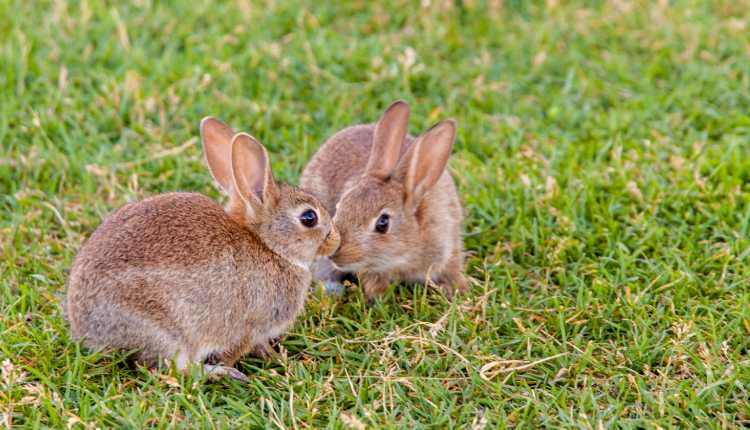
3. Rabbit of Oryctolagus cuniculus
Rabbits are herbivores who ingest their own droppings to digest their food further and extract sufficient nutrients since their diet contains large amount of cellulose. Cellulose is hard to digest. They are crepuscular. A crepuscular animal is an animal that is usually awake or active during twilight. Note that this behavior is different from diurnal or nocturnal although some crepuscular animals may be active in a moonlit night or overcast day. They sleep with their eyes open so any sudden movements tend to awaken rabbits. They are often at risk of diseases like RHD (Rabbit Hemorrhagic Disease) or myxomatosis. Tapeworms such Taenia serialis, external parasites like fleas and mites, coccidia and Toxoplasma gondii may also infect them. Domesticated rabbits who have diet lacking in fiber are ofte found susceptible to lethal gastrointestinal stasis. Fortunately, they are not known to be infected with rabies or transmit rabies to humans. According to Korean and Japanese mythology, Rabbits live on moon and make rice cakes.

4. Fish
In case you or someone else is allergic to fur or disgusted or scared of rodents and reptiles, going for Fish is the best option. They might be incredibly hard to take care of but once you get the hang of it, they are fun to observe. They have been recognized source of beauty, appearing in cave art or raised as ornamental fish in ponds and aquariums. They are treated as a symbol of happiness in Dhamma of Buddhism because they have complete freedom in water. When drawn in the car form, they are regarded in the Orient as sacred on account of their elegance, beaty, size and life span. Before keeping a fish, you need to do your research so you can provide the best environment for the fish to lead a happy life. You need to make sure of water temperature, food, filter, aquarium size and water type.
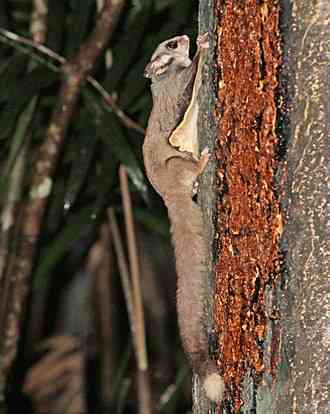
5. Sugar Glider or Petaurus breviceps
They are omnivore, arboreal and nocturnal gliding possum. The name ‘Sugar Glider’ refers to its preference for sweet food like sap, nectar and its ability to glide in air, almost like a flying squirrel. In summer, they are insectivorous while in winter, they feed on acacia gum, eucalyptus sap, manna, honeydrew and lerp, hence, they become exudativorous. They are also known to be opportunistic feeders, readily preying on lizards and small birds. In captivity, they tend to suffer from Ca (calcium) deficiencies if not fed an adequate diet. Ca deficiency causes the body to leech Ca from the bones, with the hind legs first to show dysfunction. Plenty of attention and environmental enrichment is required for this highly social animal, especially for those kept as individuals. They have shown symptoms of depression, loss of appetite, irritability and self-mutilation as a result of loneliness.
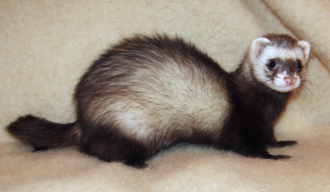
6. Ferret or Mustela putorius furo
It is the domesticated form of European pole cat and belongs to the genus Mustela. They have black, brown, white or mixed fur. Ferret are known to average a length of 51 cm including the tail and weight 0.7-2 kg. They have lifespan of 7 to 10 years. They are used to hunt animals but now, mostly are kept as pets. The litter size is usually between three and seven kits, weaned after three to six weeks and become independent in about three months. Ferrets spend 14-18 hours a day asleep and are active around the hours of dawn and dusk. They are territorial, like to burrow and enjoy sleeping in enclosed area. Ferrets release anal gland secretion to mark territories or as a warning signal when startled or scared. Unlike skunks, the smell is much less potent and dissipates rapidly. Pet ferrets are sold de-scented or with anal glands removed. Although in many parts, de-scenting is considered an unnecessary mutilation. In case they are excited, they perform the ‘Weasel war dance’. Despite the name, it is not an aggressive behavior and is rather an invitation to come and play. In case they are unhappy, scared or upset they will hiss or squeak softly.
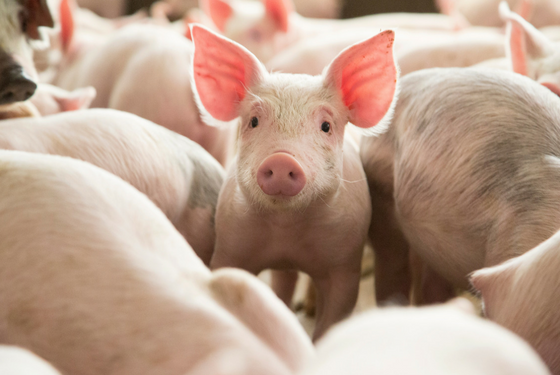
7. Minature Pig or Micro Pig or Teacup Pig or Sus scrofa domesticus
These include Pot-bellied pigs, Gottingen minipigs, Juliana pigs, Chotaw Hogs or Kunekune. Notable features of these pigs include possession of small, perked-back ears, potbelly, sway back, chubby figure, round head, short snout, legs and neck, a short tail and thick hair at the end of the tail. They weigh about 34 kg to 91 kg. Domestic pigs are highly intelligent, social and emotional creatures. They are considered hypoallergenic. That is, they are known to do well with people who display usual animal allergies.
They show life span of 15 to 20 years and thus, require long-term commitment. Un-neutered male and female swine express unwanted, aggressive behavior and are prone to developing serious health issues. Regular trimming of hooves is necessary as untreated hooves can cause major pain, create malformation in the bone structure and cause it to be more susceptible to fungal grown between crevices of the hoof. Natural behavior causes pigs to have strong of fear of being picked up, but they calm down once back on the ground. It is suggested you hold the pig by supporting it another the legs as it is not stressful for animal. The pigs get destructive if bored so keep them occupied with enrichment activities. You may try rooting since it is found to be comforting to pigs. Pigs in houses may root household objects and hence, should have special rooting box filled with rocks, soil and straw. For those who do not know what rooting is, it is a behavior displayed by pigs where they rub their snout against something.

8. Iguana or Iguana iguana
Iguana growns to a sie of 1.5 m Length, including the tail although a few have shown further grown. They are good pets due to their calm nature and bright nature. They can be very demanding when it comes to care and require experienced hands. Space requirements and the need for special lightening and heat can prove challenging to some amateur hobbyists. Iguanas use head bobs and dewlaps in variety of ways during social interaction such as greeting another iguana, courting a mate or facing off against a predator. When frightened by a predator, they attempt to flee. Near a body of water, they will dive into the water and swim away. If cornered by the said threat, they will extend and display the dewlap under its neck, stiffen up and puff up its body, hiss and bob its head at the aggressor.
If the threat continues to persists, the iguana will lash its tail, bite and use claws. They are hunted by predatory birds. The sound of a bird makes them freeze and hence, they are easy to capture. The diet consists of leaves such as turnip green, mustard green, dandelion green, flowers, fruit and growing shoots. Juvenile iguanas often eat feces from adults to acquire essential microflora in order to digest low quality, hard to digest vegetarian died. There are evidences of wild iguanas eating grasshoppers and tree snails by mistake. Iguanas thrive only in a temperature of 26 degree Celsius to 35 degrees Celsius and must have appropriate source of UVB and UVA. Otherwise, it can result in fatal metabolic bone disease.

